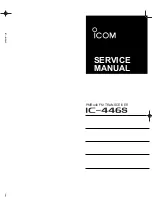
129
Short technical guide
MPEG-4
A further development of MPEG-2 with even
higher data compression, intended for HDTV
transmissions.
NID
The channel identi
fi
cation number is also referred
to as the Network ID or NID.
OSD – On-Screen Display
Displays by the receiver on the TV screen
(e.g. main menu)
OTR
One Touch Recording
PAL
Analogue TV standard
Pay TV
Television channels available on subscription (e.g.
Sky). Encrypted transmitters which can only be
decrypted by using the appropriate smart card.
As a rule these services are subscription-only.
PCMCIA
Standard for internal decoder interface for pay-TV
PID
The PID (Packet IDenti
fi
cation) number is an
identi
fi
cation number for video signals and audio
signals in the digital data stream of DVB-MPEG-2
signals. The receiver uses the PID number to create
a unique assignment for the video and audio data
transmission. The PCR PID is the identi
fi
cation
number for the synchronisation signal. The PID-
PCR is normally identical to the video PID. For
programmes broadcast in multiple languages, the
audio PD can be entered manually to assign a
different language to the TV programme. After the
PID is entered, the digital receiver automatically
selects the audio data identi
fi
ed by the PID number
from the data stream and assigns it to the video
signal.
PIN
Personal Identi
fi
cation Number. For this unit the
PIN is a 4-digit numeric code which must be
entered to unlock the unit to allow access to certain
functions and channels.
PIP
Picture-in-Picture function
QAM - Quadrature-Amplitude-Modulation
Digital modulation process with phase shift
keying, which is used for transmissions in cable
networks.
Receivers
Satellite receiver
RGB
Video signal made up of three individual colour
signals (red, green, blue)
Scart cable
21-pin connecting cable (e.g. receiver/TV)
Smart card
Card from Pay TV provider to decrypt its
channels
Stand-by
Standby mode
Symbol Rate
The symbol rate describes the quantity of data
that is transmitted per second. The symbol rate
is measured in MSymbols/s and is equal to the
number of symbols received per second.
Timer function
Clock function for pre-programmed switch on and
off times.
Timeshift function
Timeshifted playback
UPnP
Stands for “Universal Plug and Play”. Further
information is available from “www.upnp.org”.
VCR/PVR connection
Connection for an external recorder (such as a
video or DVD recorder)
Video bit rate
The video bit rate describes the quantity of data
from the digitised video signal that is transmitted
per second.
Viterbi rate
The Viterbi rate (code rate, error rate) characterises
the error protection used by the programme
provider. The DVB standard provides the following
values: 1/2 - 2/3 - 3/4 - 5/6 - 7/8




































